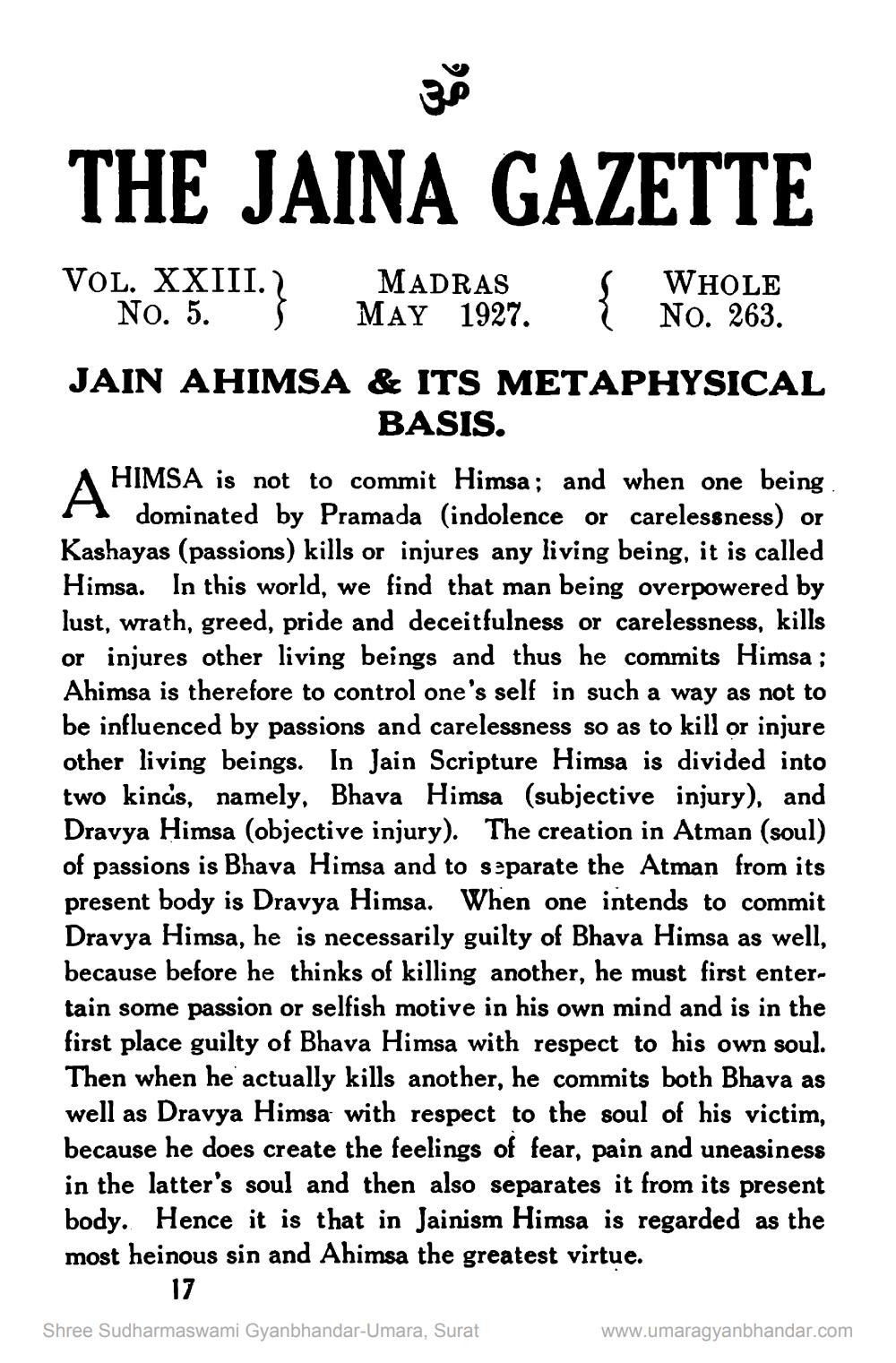________________
THE JAINA GAZETTE
VOL. XXIII.)
No. 5.
MADRAS MAY 1927.
WHOLE No. 263.
JAIN AHIMSA & ITS METAPHYSICAL
BASIS. A HIMSA is not to commit Himsa; and when one being n dominated by Pramada (indolence or carelessness) or Kashayas (passions) kills or injures any living being, it is called Himsa. In this world, we find that man being overpowered by lust, wrath, greed, pride and deceitfulness or carelessness, kills or injures other living beings and thus he commits Himsa ; Ahimsa is therefore to control one's self in such a way as not to be influenced by passions and carelessness so as to kill or injure other living beings. In Jain Scripture Himsa is divided into two kinds, namely, Bhava Himsa (subjective injury), and Dravya Himsa (objective injury). The creation in Atman (soul) of passions is Bhava Himsa and to separate the Atman from its present body is Dravya Himsa. When one intends to commit Dravya Himsa, he is necessarily guilty of Bhava Himsa as well, because before he thinks of killing another, he must first entertain some passion or selfish motive in his own mind and is in the first place guilty of Bhava Himsa with respect to his own soul. Then when he actually kills another, he commits both Bhava as well as Dravya Himsa with respect to the soul of his victim, because he does create the feelings of fear, pain and uneasiness in the latter's soul and then also separates it from its present body. Hence it is that in Jainism Himsa is regarded as the most heinous sin and Ahimsa the greatest virtue.
17
Shree Sudharmaswami Gyanbhandar-Umara, Surat
www.umaragyanbhandar.com




